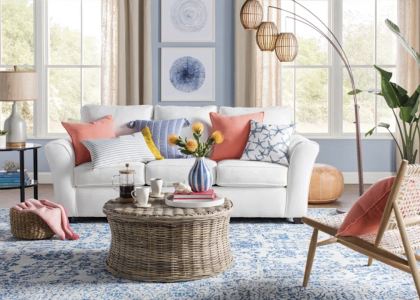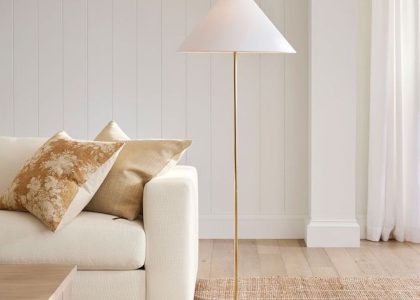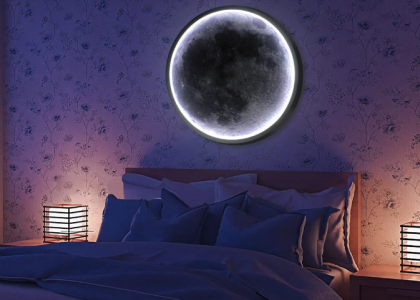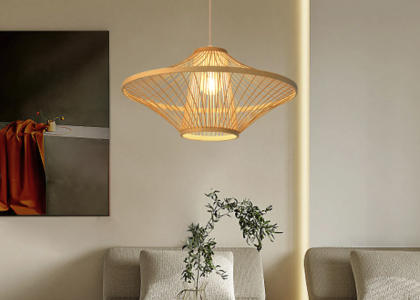Selecting the appropriate size and style of lighting fixtures is a fundamental step in any interior design project. The dimensions of a room, along with its overall aesthetic, dictate the types of fixtures that will harmonize with the space. For instance, in a small room, oversized chandeliers or bulky floor lamps can overwhelm the area, making it feel cramped and cluttered.
Conversely, in expansive spaces such as grand living rooms or open-concept kitchens, smaller fixtures may get lost, failing to provide adequate illumination or visual interest. Therefore, it is essential to measure the dimensions of the room and consider the scale of the furniture and other decor elements before making a lighting choice. Style is equally important when selecting lighting fixtures.
The design should complement the existing decor while also reflecting personal taste. For example, a modern minimalist space may benefit from sleek, geometric pendant lights that enhance the clean lines of the room. In contrast, a rustic farmhouse aesthetic might call for wrought iron fixtures or vintage-inspired lanterns that evoke warmth and charm.
Additionally, mixing styles can create an eclectic look; however, it is crucial to maintain a cohesive theme throughout the space. This can be achieved by choosing fixtures that share common materials or colors, ensuring that even diverse styles feel unified.
Maximizing Functionality and Aesthetics
Functional and Aesthetic Lighting
Lighting Lumesdesign plays a crucial role in any space, serving both functional and aesthetic purposes. To strike the perfect balance, it’s essential to consider the specific activities that will take place in each area of the home. For instance, in a kitchen, bright task lighting is vital for food preparation and cooking. Under-cabinet lights can effectively illuminate countertops, while pendant lights over an island can provide both functionality and style.
Customizing Lighting for Different Spaces
Different rooms require distinct lighting approaches. A living room, for example, may require softer lighting options that create a cozy atmosphere for relaxation and socializing. Dimmable fixtures or layered lighting strategies can help achieve the desired ambiance. In contrast, a kitchen or workspace may require brighter, more focused lighting to facilitate productivity.
Layering Lighting for Enhanced Ambiance
Incorporating various types of lighting – ambient, task, and accent – can significantly enhance both functionality and aesthetics. Ambient lighting provides overall illumination, while task lighting focuses on specific areas where activities occur. Accent lighting highlights particular features or decor elements, such as artwork or architectural details. By combining these different types of lighting, one can create a well-rounded environment that meets practical needs while also showcasing the beauty of the space.
Creating a Harmonious Lighting Experience
By thoughtfully combining different lighting types, you can transform any space into a harmonious and inviting environment. For example, using recessed lighting for ambient illumination, paired with stylish wall sconces for accent lighting, can transform a hallway into an inviting gallery-like experience. This approach not only meets practical needs but also elevates the aesthetic appeal of the space.
Creating the Perfect Ambiance
The ambiance of a room is largely influenced by its lighting design. The right lighting can evoke emotions and set the mood for various activities, from intimate dinners to lively gatherings. To create the perfect ambiance, one must consider not only the brightness of the light but also its color temperature.
Warm white light (around 2700K to 3000K) tends to create a cozy and inviting atmosphere, making it ideal for living rooms and bedrooms. On the other hand, cooler white light (4000K to 5000K) is often more energizing and is suitable for workspaces or kitchens where focus and clarity are paramount. Layering light sources is another effective strategy for crafting ambiance.
By combining different types of lighting—such as chandeliers, wall sconces, and floor lamps—one can create depth and dimension within a room. This approach allows for flexibility; dimming certain lights while keeping others bright can easily shift the mood from vibrant and energetic to calm and serene. Additionally, incorporating smart lighting systems enables homeowners to adjust brightness and color temperature with ease, tailoring the environment to suit various occasions or personal preferences.
Incorporating Energy-Efficient Lighting
In today’s environmentally conscious world, energy-efficient lighting has become a priority for many homeowners. Traditional incandescent bulbs consume a significant amount of energy and have a shorter lifespan compared to modern alternatives like LED (light-emitting diode) and CFL (compact fluorescent lamp) bulbs. LEDs are particularly noteworthy for their longevity—often lasting up to 25 times longer than incandescent bulbs—and their ability to produce high-quality light while using a fraction of the energy.
This not only reduces electricity bills but also minimizes environmental impact. When selecting energy-efficient lighting options, it is essential to consider both functionality and aesthetics. Many LED fixtures now come in various styles that can seamlessly integrate into any decor theme without sacrificing design appeal.
For instance, sleek LED recessed lights can provide unobtrusive ambient lighting in modern spaces, while vintage-style LED bulbs can add character to pendant fixtures in more traditional settings. Furthermore, utilizing smart technology with energy-efficient bulbs allows for enhanced control over lighting usage; timers and motion sensors can ensure that lights are only on when needed, further conserving energy.
Utilizing Table Lamps for Task Lighting
Table lamps are versatile lighting solutions that serve both functional and decorative purposes in any room. They provide focused task lighting for activities such as reading, writing, or working on hobbies while also contributing to the overall design aesthetic of a space. When selecting table lamps, it is crucial to consider their height and shade design to ensure they provide adequate illumination without causing glare or straining the eyes.
A lamp with an adjustable arm or a swivel head can offer flexibility in directing light precisely where it is needed. In addition to their practical uses, table lamps can serve as statement pieces that enhance the decor of a room. A bold lamp with an artistic base or an eye-catching shade can become a focal point on a side table or desk.
Mixing different styles of table lamps throughout a space can create visual interest; however, maintaining some consistency—such as color or material—can help tie the look together. For example, using brass table lamps in various designs across a room can add elegance while ensuring cohesion.
Adding Personal Touches with Customization
Customization allows homeowners to infuse their personality into their lighting choices, transforming standard fixtures into unique expressions of style. One way to achieve this is through personalized lamp shades or custom-made fixtures that reflect individual tastes and preferences. Many retailers offer options for customizing colors, patterns, and materials for lamp shades, enabling homeowners to create pieces that perfectly complement their decor while showcasing their creativity.
Another avenue for customization lies in DIY projects that repurpose existing fixtures or create entirely new ones from scratch. For instance, an old chandelier can be revitalized with a fresh coat of paint or new crystals to match contemporary decor trends. Alternatively, crafting unique pendant lights from materials like wood or metal can add an artisanal touch to any space.
These personalized elements not only enhance the aesthetic appeal but also create meaningful connections to the home environment, making it truly one-of-a-kind. Incorporating these various aspects of lighting design—from choosing the right size and style to maximizing functionality and aesthetics—can significantly elevate any interior space. By thoughtfully considering how each element interacts with others within the room, homeowners can create environments that are not only visually stunning but also practical and inviting.






